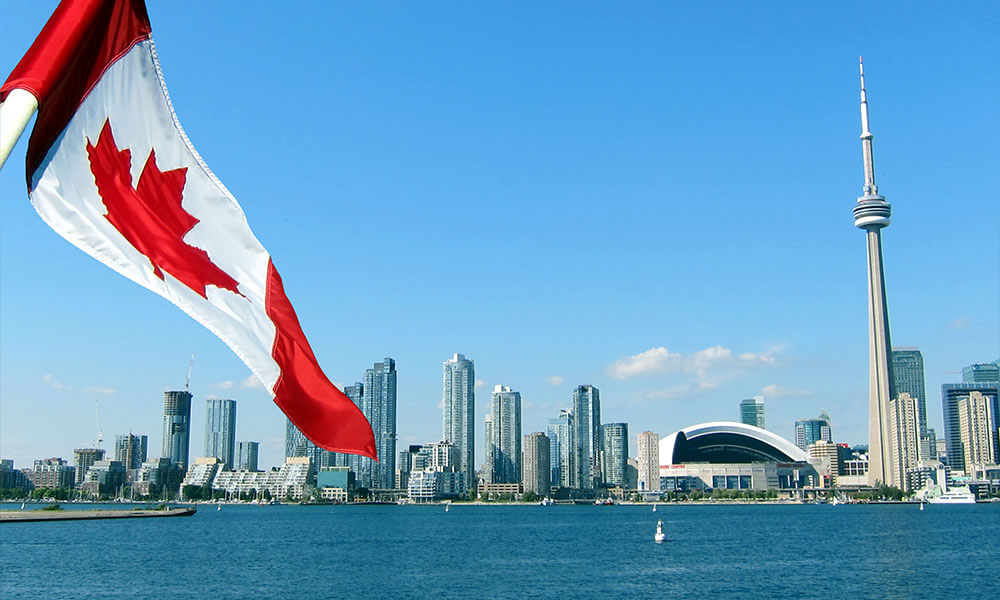
Immigrating to Canada: The story of three Filipinos who began a new life overseas
Filipinos leave their homeland for various reasons, but they usually have one thing in common: They want a better life for their loved ones. In this article, we talk about three Kabayans who have travelled out of the Philippines to build a new life in Canada.
Leaving the Philippines

The Philippines was in a time of transition when 20-year-old Zeny chose to drop out of college and work as a domestic helper in the United Arab Emirates (UAE) in 1984. Having grown up in Manila, she moved to Pampanga, Philippines, to pursue a business degree, but decided to become an overseas Filipino worker (OFW) to help her mother.
Zeny’s mother was a laundrywoman and was already getting older.
Before going abroad, Zeny only spent nine months working in a garment factory in Metro Manila. That was the longest time she’d spent employed in the Philippines. Most of her working years would be spent outside the motherland.
By the time Zeny returned to the Philippines in 1990, the country had a new president and a new constitution. She also had a new husband and her first child, Arvin.
She spent a year in the Philippines taking secretarial courses until her OFW husband sponsored her and Arvin back into the UAE in 1991. She would eventually give birth to two more children and establish a secretarial career in the Middle Eastern country.
As their children grew, Zeny and her husband thought about their future. In search of better opportunities and a permanent home for their family, they followed their close friend’s advice and moved to Manitoba, Canada in 2005.
That same year, Kababayan Issa moved to Alberta, Canada, with her parents and two younger siblings.

Unlike Zeny’s child Arvin, who spent his childhood in the UAE, Issa lived over a decade in Metro Manila. During that time, her parents had solid careers in food processing and veterinary medicine.
“We grew up fairly well-off; we did not struggle financially,” Issa recalled. “We could afford to go on vacations every year. We had lots of families around to visit with, and we also had family in the United States that we would visit every other year.”
But while Issa was growing up in Manila, her maternal grandparents were waiting for her abroad.
“It was actually my grandparents who influenced my parents to move to Canada because they wanted a good life for all of their grandchildren, and my siblings and I were the only ones still in the Philippines,” she said.
As Issa became a teenager in the early 2000s, the Philippines entered uncertain times. The country had ousted another president, faced the anxiety of bombings in Metro Manila and other parts of the country, and dealt with a short-lived mutiny all within the first four years.
It was around this time that Issa’s parents decided to immigrate to Canada.
Learning they were moving, Arvin and Issa experienced opposite reactions.
“We had come to Canada a few years before I was told we were applying to permanently live in Canada,” said Arvin. “So when I was told that moving might soon be a reality, I felt excited for the change!”
Issa, on the other hand, was apprehensive: “I was sad and a little scared when I found out. I did not want to leave the only place and people that I knew my entire life. I knew nothing about Canada.”
Adjusting to life in Canada

After immigrating to Canada, Zeny, Issa, and Arvin, all had to adjust to their new country’s cold weather.
Arvin and Issa also had to get used to the Canadian school system. Though English was not a problem for either of them, catching up to Canadian culture and history was challenging in their first few years.
Arvin even described this as a major challenge and gave “not knowing who Terry Fox was, and how to layer your clothes to survive going to school in -35℃ weather” as examples of what he had to learn as a newbie in Canada.
(Note: Terry Fox was a Canadian athlete, cancer amputee, and activist. He is well-known in Canada for his Marathon of Hope, where he ran 42 km in 1980 to raise funds for cancer research.)
Issa also had to contend with going from being a face in the crowd, to becoming the foreign kid in a school where she was one of the only Filipinos.
“When I was in junior high, I remember hearing a news story about a teacher telling a Filipino student that he was ‘eating like an animal’ for eating his lunch with a fork and spoon, so I was afraid that I would get the same treatment at my own school,” she said. “There were times I would bring Filipino food for lunch, and the other kids would say that my food was ‘weird.’ I had to remind myself that my culture was nothing to be ashamed of.”
Issa also had to deal with going through Canadian immigration and changing her last name, something she was not prepared to do.
“I remember Immigration telling us that they were going to change a letter in my last name because they could not type it in their system,” said Issa, recalling how the change was done by simply typing on a computer. “They changed my name. My family name. A name that goes back centuries and has a place in my country’s history. The name that connects me to the rest of my family, my roots, my heritage, my culture – changed to make it more convenient for someone who doesn’t speak my language or know where I came from.”
The pain of being disconnected from her roots still stays with Issa today. After marriage, she chose to keep “what was left” of her Filipino surname.
Meanwhile, Issa’s parents and Arvin’s mother Zeny were starting their careers from scratch.

Zeny said, “I was warned by my UAE manager before moving to Canada that I would have a hard time finding the same job I have in the UAE”.
Because she was trained abroad, she could not continue her secretarial career after immigrating to Canada. Instead, Zeny spent her first year in Winnipeg working clerical jobs. A year later, she moved to Calgary, Alberta and worked in fast food.
Her husband, on the other hand, found work in one of the most in-demand jobs in Canada. She would then open their home to foster children from 2008 to 2015.
For Issa’s parents, immigrating to Canada meant her father had to step down from an executive position in his family’s business. In addition, Issa’s mother could no longer be a veterinarian in Calgary because she didn’t have Canadian certifications.
Issa still continues to reflect on her parents’ sacrifices. It was difficult to see her parents underemployed, knowing how hard they had worked to establish their careers in the Philippines. She said it was like “all of their hard work and accomplishments held no weight in this new life.”
Becoming a Filipino Canadian

According to Arvin, getting used to the culture after immigrating to Canada was something one “just learned.” “That’s how you got over it (culture shock),” he said.
Arvin and Issa even met in high school and became friends. Together, they overcame culture shock and grew into the Canadian culture along with their classmates.
Over time, Zeny and Issa’s families adjusted to Canadian life.
Zeny, now a widow, became a nursing aide in 2016. She sees herself maintaining this career until retirement.
Issa’s mother and father now work as a vet assistant and as an inventory manager at a superstore, respectively.
“I think they struggled to come to terms with this new life, but I think they are at a place now where they are content. I think they did what they could with what they had,” said Issa.
As an adult, Issa has also accepted her parents’ decision to move, understanding now that immigrating to Canada was even harder for her mother and father. She also continues to hold on to her Filipino heritage.

“As an adult, I’ve been more open about being Filipino and more willing to share my culture with others (mostly with food). I’ve come to embrace my Filipino-ness more and have made more of an effort to live it,” Issa said.
She plans to visit the Philippines as much as she can. “I don’t know how else to describe it, but every time I visit, I feel whole again,” she said.
While Arvin grew up outside of the Philippines, he is proud of his Filipino roots and is “actively planning” to visit his birthplace with his girlfriend, whom he calls the “love of my life.”
Meanwhile, Zeny is looking forward to becoming a grandmother and spending the harsh Canadian winters in the Philippines once she retires.
To other Filipinos thinking of immigrating to Canada, she had this to say: “Go for it! But be ready for whatever life you will be given here; be ready for the challenges you may face; be very patient. Whatever Canada will offer you, accept; live with it as long as it won’t hurt you and your loved ones. There are so many great opportunities waiting. It’s just up to the individual how to grab and prosper.”
Send money to the Philippines

If you’re considering moving to Canada as an OFW, remember to use a secure remittance app when sending money to your loved ones back home.
Kabayan Remit offers a quick, easy, and convenient way of transferring money to the Philippines, with high exchange rates and very low service fees.
